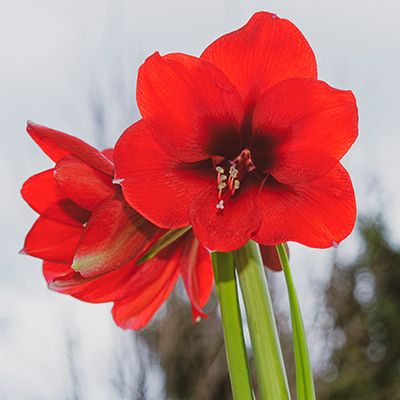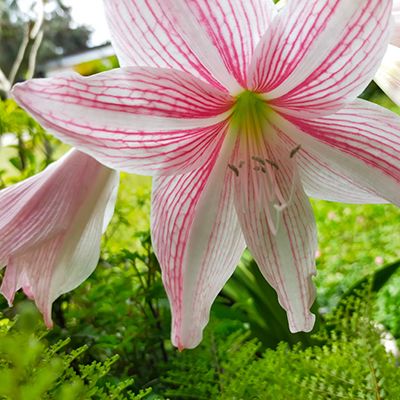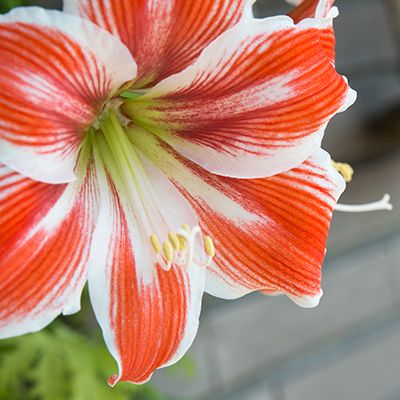Hybrid Amaryllis



Depending on the size of the bulb, amaryllis plants will produce one or two thick stems, each bearing a cluster of three to six trumpet-shaped blossoms up to eight inches across. Usually after blooming, broad strap-shaped leaves will appear. The leaves will be arching rather than upright and should be left to replenish the bulb. The flower stalks should be cut off at the base when the plants have finished blooming.
Hybrid amaryllis flowers may be white, pink, red, crimson or orange-scarlet. Some are bi-colored and on many the veins of the petals are white or other colors.
Amaryllis may be grown indoors or outdoors. Outdoors they will bloom in spring but they are very susceptible to damage by snails, slugs, gophers, mice and deer. They also require excellent drainage when grown in the garden so the bulbs do not rot.
Most amaryllis bulbs will be used for indoor culture during the holiday season and will bloom seven to eight weeks after planting. For sure bloom at Christmas, plant the bulbs about November 15th. Until then, store the bulb in a cool, dry place or in a paper bag in the refrigerator crisper.
For each bulb, choose a container that allows two inches between all sides of the bulb and the container edges. Trim the roots on the bulb to about one inch long and set aside for two days to allow the roots to “heal”. Plant the bulbs in a soil mix of two-thirds Master Nursery® Gardener’s Gold Potting Soil and one-third sand to which has been added a tablespoonful of bulb food. The neck and top one-third of the bulb should protrude above the soil surface.
Water thoroughly after planting and then give just enough water to keep the soil barely moist until active growth begins. Keep the container near a window in a bright, warm room. Turn the pot frequently so the flower stems will grow upright rather than lean toward the light. When the buds show color, the plant may be moved to its desired location.
For good performance the following year, it is important to keep the plant growing vigorously. Move the plant back to the warmest, sunniest place available, water regularly, and fertilize bimonthly with a liquid fertilizer diluted to half strength. Stop fertilizing five to six months after flowering ends, then taper off watering over the next three to four weeks. When foliage yellows, cut it off and then store the dry potted bulbs in a cool, dark place. The following November, clean the bulb and pot and start the cycle again.
If you choose to plant the bulbs in the garden, be sure to amend the soil with Master Nursery® Gold Rush or similar organic material to provide necessary drainage. The planting area should receive little or no summer water. Place bulb food in the hole under the bulb and plant so that the bulb neck is even with the soil surface. After that, treat it as any perennial bulb grown in a sunny or half sunny location. When the foliage yellows, cut off to permit the bulb to go into dormancy.